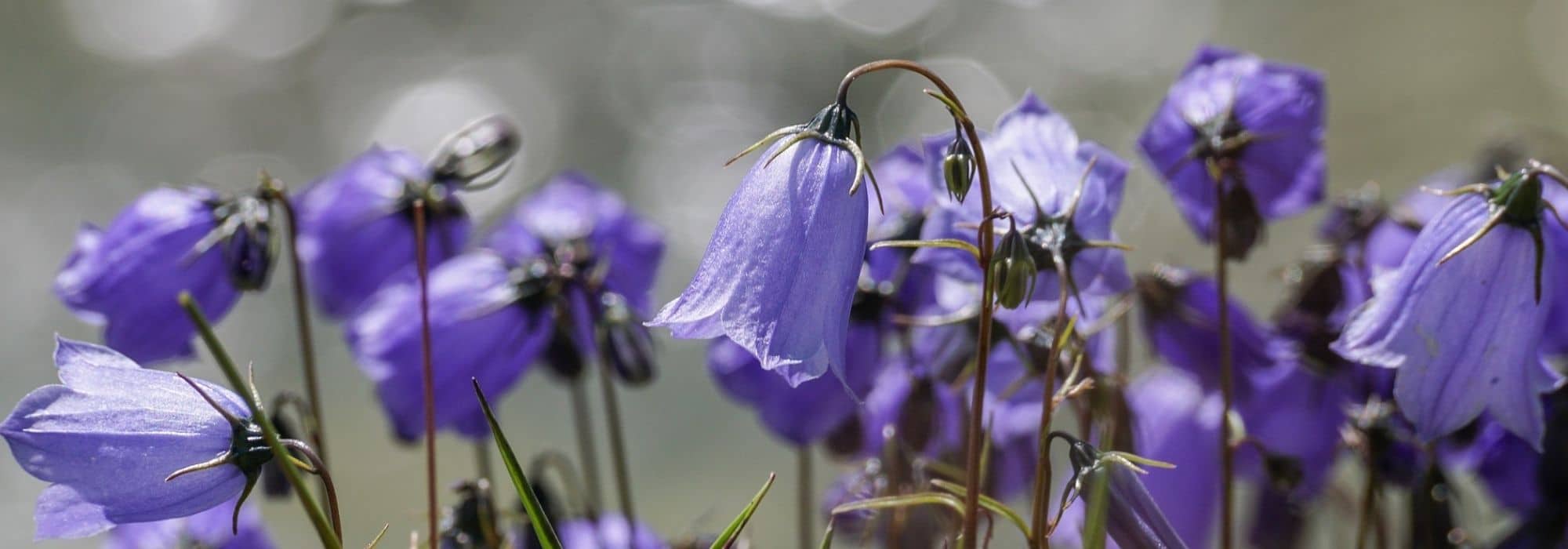
6 groundcover campanulas
The best creeping varieties
Contents
Campanulas are delightful perennials that offer a long summer flowering period in the form of charming bells. Although there are bushy or upright varieties, the creeping varieties are the most interesting for ground cover. Moreover, they are hardy and easy to cultivate. But which campanula should you choose from all the existing varieties? To assist you in your choice, discover our selection of the best campanulas for ground cover.
Campanula carpatica 'Blue Clips' and 'White Clips'
The Campanula carpatica ‘Blue Clips’ is one of the most remarkable varieties of Carpathian bellflower and also one of the most floriferous. Just like its white-flowered sister: the Campanula carpatica ‘White Clips’. This lovely perennial ground cover offers a long flowering period, from June to September. Its flowers take the form of charming bell-shaped blooms in a bright blue-mauve hue. Its semi-evergreen foliage is very dentate and a vibrant glossy green. It thrives in sunny or partially shaded locations, in light, well-drained soil that remains cool, stony, and tolerates lime. This Carpathian bellflower is ideal for rockeries, borders, on a wall, or in a container. It is perfect as ground cover at the base of roses or bushes. You can pair it with its white-flowered sister the ‘White Clips’ bellflower, with alyssums, and aubrietas.
Read also
5 perennials for dry groundCampanula cochleariifolia 'Alba'
The Campanula cochleariifolia ‘Alba’ is a beautiful variety with white flowers of the cochlear-leaved bellflower. From June to August, it reveals a spectacular flowering of small, bell-shaped white flowers. With its deciduous foliage, it forms a carpet 5 to 12 cm high and 20 cm wide. It thrives in rockeries, in well-drained, light, cool, stony, and even calcareous soil. Plant it in the sun, provided it is not scorching; otherwise, prefer a spot in partial shade. It looks stunning in the cracks of a wall, between paving stones, in pots, in borders, on slopes, or in a wild garden. The cochlear-leaved bellflower pairs beautifully with edelweiss, pulsatilla anemones, gentians, white creeping gypsophila, or pale pink.
Discover other Campanula - Bell Flower
View all →Available in 0 sizes
Available in 0 sizes
Available in 2 sizes
Available in 0 sizes
Available in 0 sizes
Available in 2 sizes
Available in 0 sizes
Available in 1 sizes
Available in 1 sizes
Available in 2 sizes
Wall Bellflower (Campanula portenschlagiana)
Campanula portenschlagiana is a charming creeping perennial that is very easy to grow. This variety is also known as wall bellflower or ‘muralis’. It offers a long flowering period from June to September, which may be temporarily interrupted by summer heat. Its small star-shaped flowers are a vivid blue-violet. Hardy, it prefers well-drained, cool, light, and even calcareous soil, in full sun or partial shade. Its bright green foliage is dentate and semi-evergreen, or even evergreen in mild climates. Ideal as ground cover, it adapts to almost any location. You can plant this wall bellflower in pots, hanging baskets, on a low wall, in rockeries, in borders, or at the foot of roses, bushes, or a hedge. For a beautiful effect, pair it with a pink Diascia, a Diamond Frost white-flowered annual euphorbia, or a Coreopsis.
Read also
5 groundcovers for clay soilThe Campanula hybrid 'Ringsabell Indigo Blue'
The hybrid Campanula ‘Ringsabell Indigo Blue’ is a perennial that gently spreads to form a beautiful ground cover with dark green leaves at maturity. This compact and bushy cushion reaches 45 cm in width and 15 cm in height. From May to July, slender, tall stems emerge, bearing long, bell-shaped flowers in indigo to violet blue. In autumn, the foliage takes on red tones before disappearing if the cold is intense. The Campanula takesimana ‘Ringsabell Indigo Blue’ is easy to grow and requires little maintenance. It prefers a sunny or partially shaded position, in ordinary, cool, well-drained soil, and can even tolerate calcareous or clay soils. Plant it at the edge, in borders, in pots, in meadows, and woodland edges. To accompany it, you can plant geraniums, phlox, valerians, purple coneflower, lady’s mantle, and even fennel or meadowsweet.
The Campanula hybrid 'Ringsabell Mulberry Rose'
Hybrid Campanula ‘Ringsabell Mulberry Rose’ is a faster-growing perennial that is slightly taller than the blue-flowered variety. At maturity, it forms a ground cover of dark green leaves. This compact cushion measures 40 cm wide and 15 cm high. The foliage turns red in autumn, then disappears during winter. Long, slender flower stems appear from May to July. The bell-shaped flowers open in a dark pink, then mature to a light pink. The Campanula takesimana ‘Ringsabell Mulberry Rose’ adapts well to any fresh, well-drained, and loose soil. It thrives in both sun and partial shade, in ordinary soil, whether calcareous or clayey. It is perfect for decorating a flower bed, a pot, a meadow, or a wild garden. Pair it with geraniums, a meadowsweet, perennial sweet peas, an alchemilla, a purple coneflower, or a valerian.
Campanula 'Wedding Bells'
Campanula ‘Wedding Bells’ is a remarkable perennial known for its lovely semi-double bell-shaped flowers. It blooms from June to August, in white-cream tones sprinkled with pink. It is ideal as ground cover due to its bushy and spreading habit, reaching 40 cm in all directions. Its dark green foliage disappears in winter and returns in spring. It enjoys a sunny or partially shaded position, in cool, even calcareous and well-drained soil. Plant this double Campanula ‘Wedding Bells’ at the edge, in borders, in rockeries, at the woodland edge, or in understorey planting. To accompany it, you can also plant hardy geraniums, grasses such as melicas, or at the feet of roses.
To go further
- Find all our campanulate varieties
- Discover everything you need to know about campanulas: planting, growing, and care
- Subscribe!
- Contents
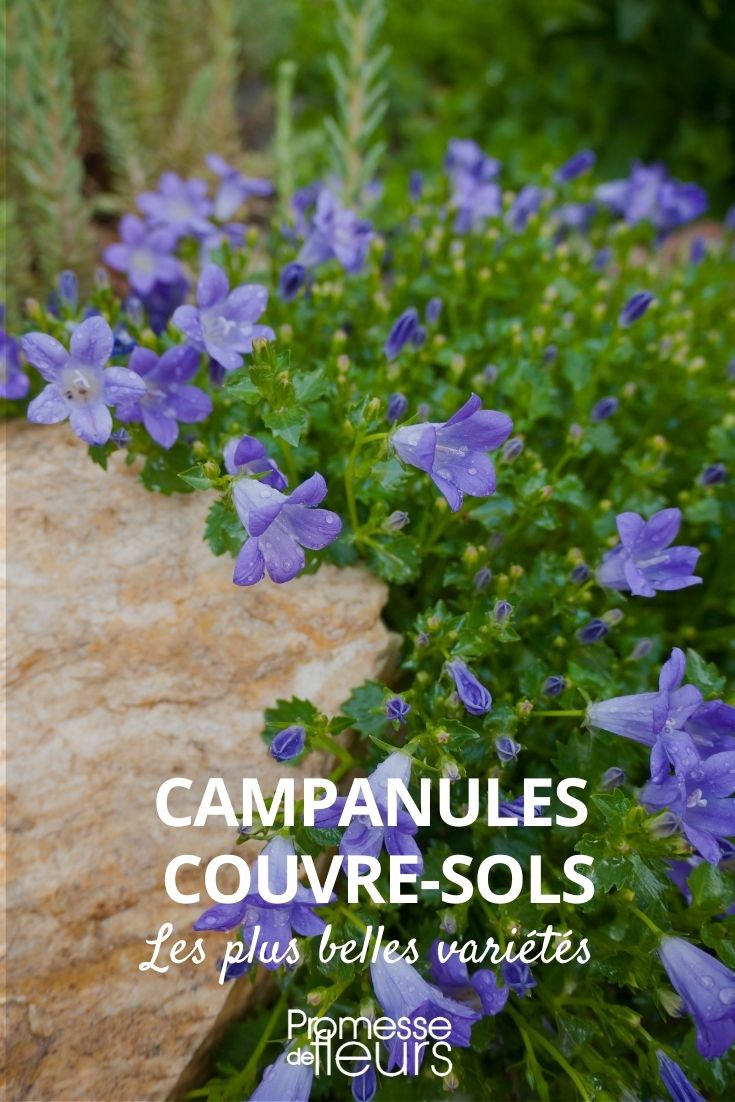































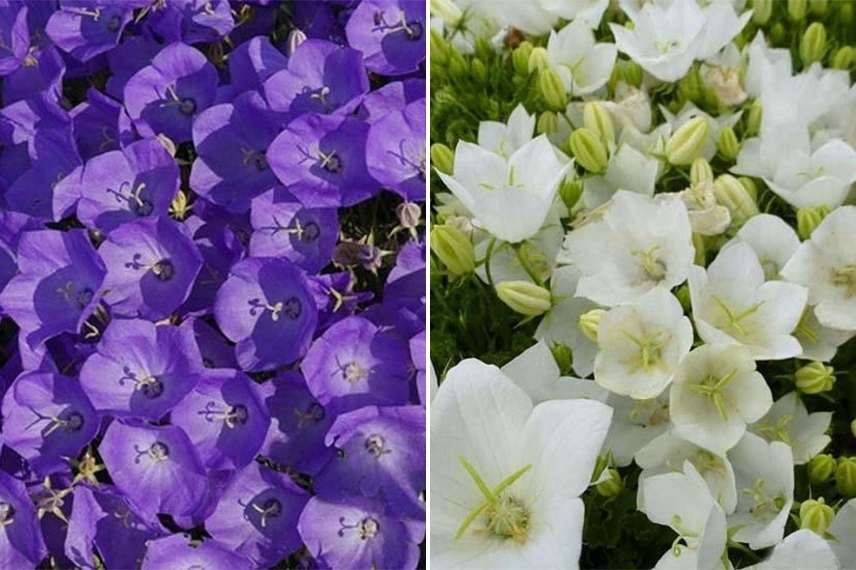
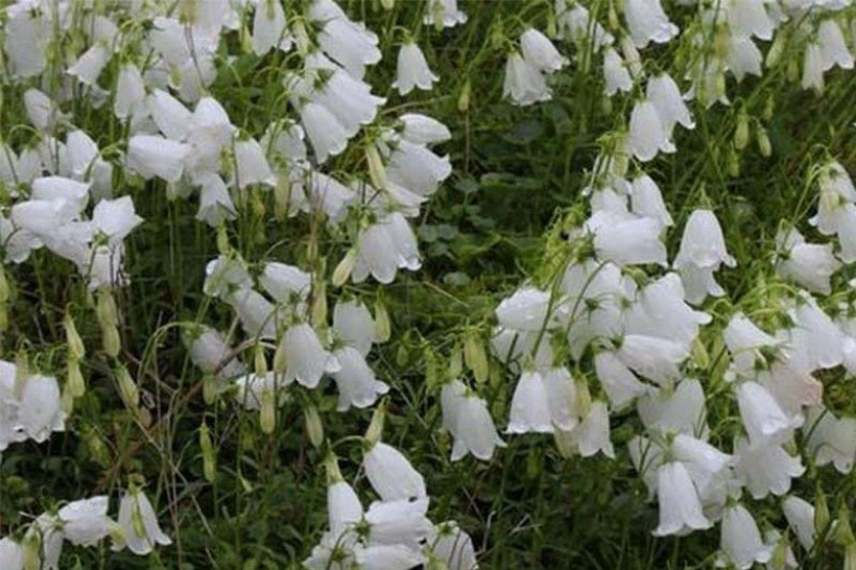
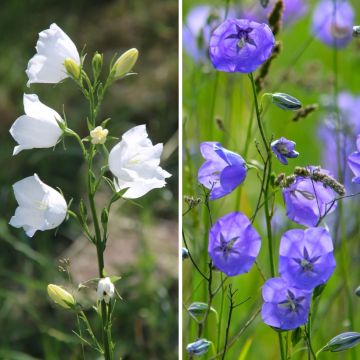
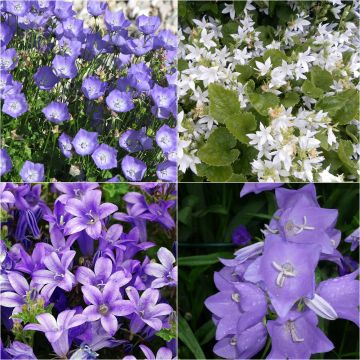
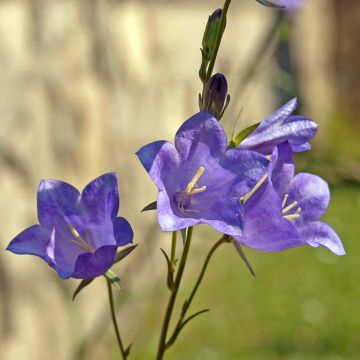
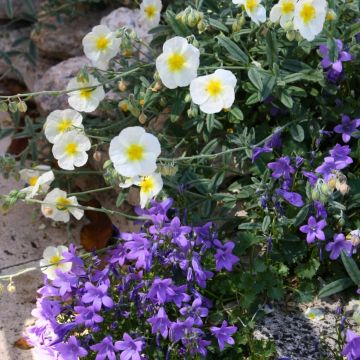
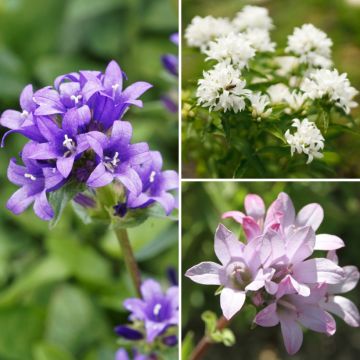
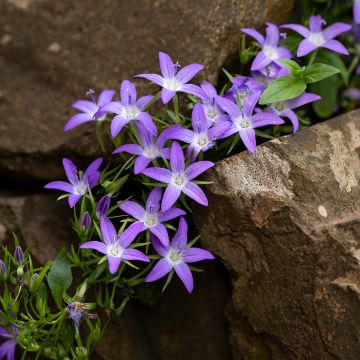
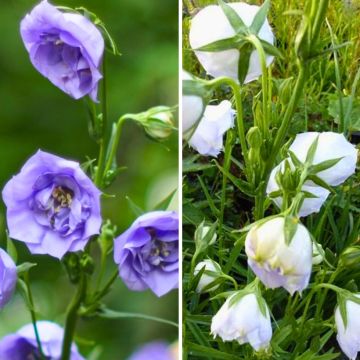
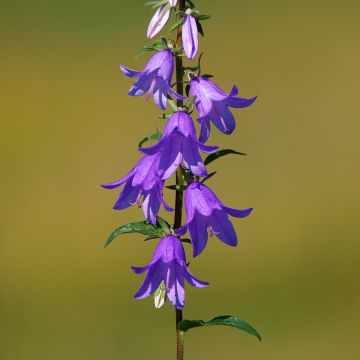
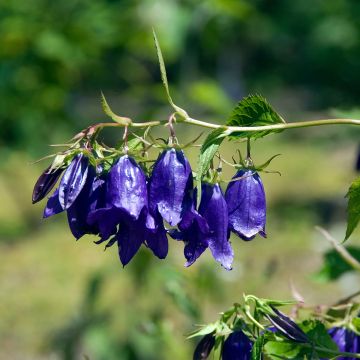
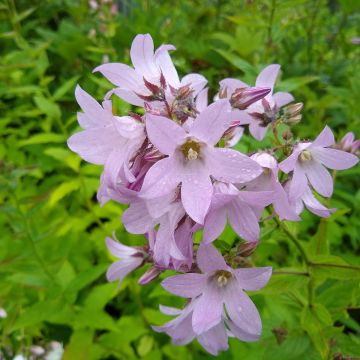
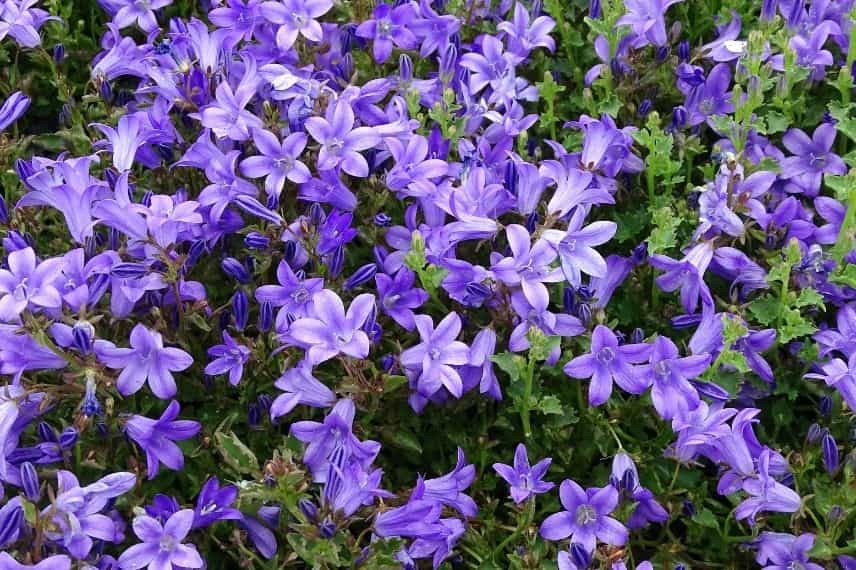
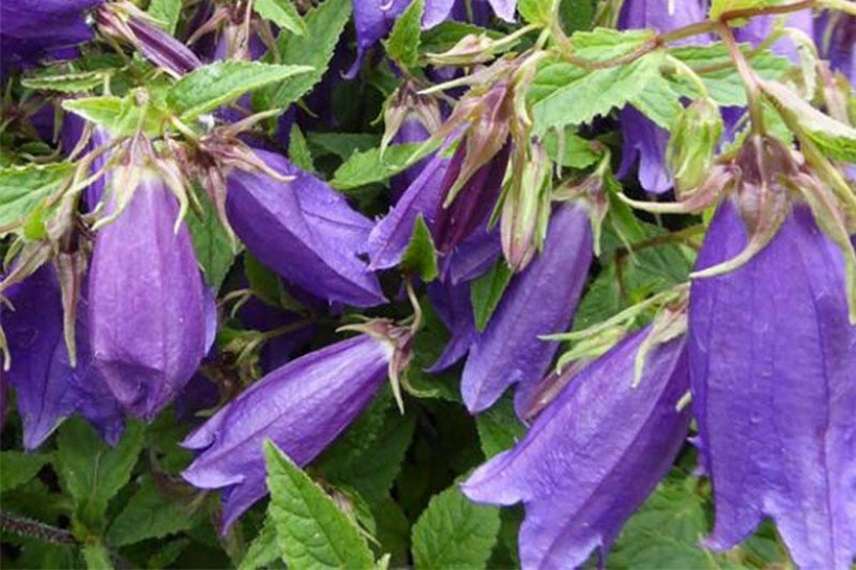
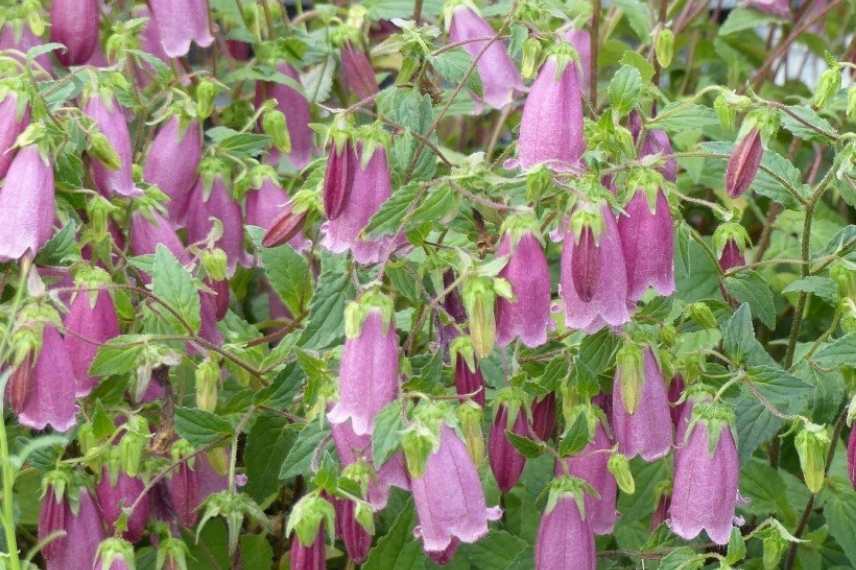
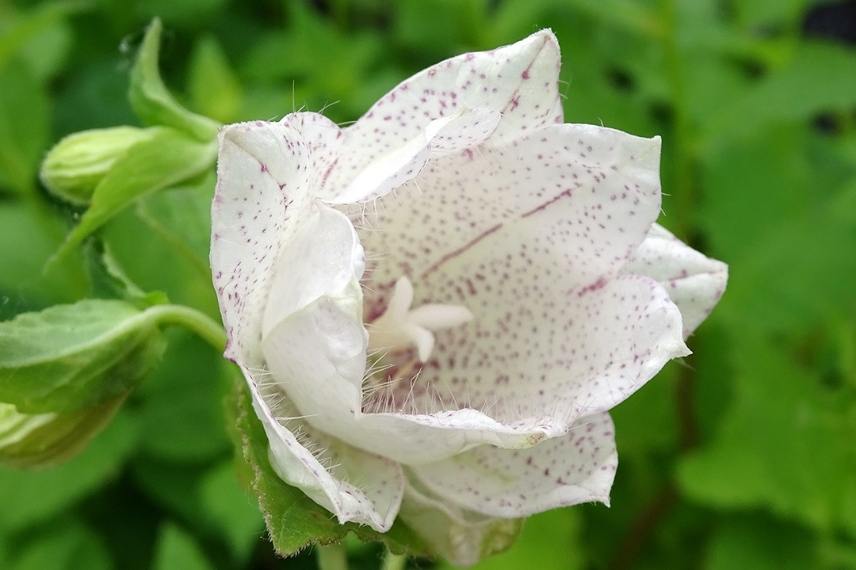
Comments